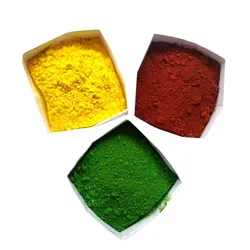Understanding Inorganic Pigments – Properties and Applications
2024-10-28
What are inorganic pigments?
Inorganic pigments are colored materials made from mineral-based compounds. They are known for their chemical stability, durability, and resistance to heat, light, and chemicals. Commonly used pigments include oxides, sulfates, and silicates, often derived from elements like iron, titanium, or chromium.
What is the difference between inorganic and organic pigments?
Inorganic pigments are mineral-based, offering better durability and opacity.
Organic pigments are carbon-based and usually brighter but less resistant to environmental factors.
Inorganic pigments are favored for applications where stability and longevity are critical, such as in paints for outdoor surfaces.
What are common types of inorganic pigments?
1. Iron oxides: Provide red, yellow, and brown shades, used in paints, coatings, and cosmetics.
2. Titanium dioxide: A popular white pigment used in paints, plastics, and paper for opacity.
3. Chromium oxides: Green pigments used in ceramics, coatings, and construction materials.
4. Zinc oxides: Often used in sunscreens, coatings, and rubber.
5. Cadmium pigments: Bright reds, yellows, and oranges used in high-performance paints.
What industries rely on inorganic pigments?
Inorganic pigments are used across a wide range of industries, including:
Paints and coatings: For durable exterior and interior paints.
Ceramics: Used in glazes for pottery and tiles.
Plastics: Provide consistent color and UV resistance.
Cosmetics: Found in mineral makeup and sunscreens.
Construction: Used in concrete and bricks to enhance aesthetics.
What are the advantages of inorganic pigments?
High heat and UV resistance: Ideal for outdoor applications.
Long-lasting color stability: Minimal fading over time.
High opacity: Requires less pigment for full coverage.
Chemical resistance: Suitable for industrial applications.
Non-toxic options available: Many inorganic pigments, like iron oxides, are safe for use in cosmetics and food packaging.



